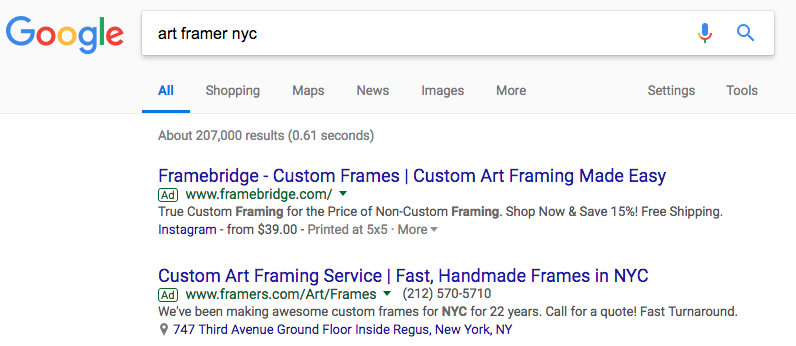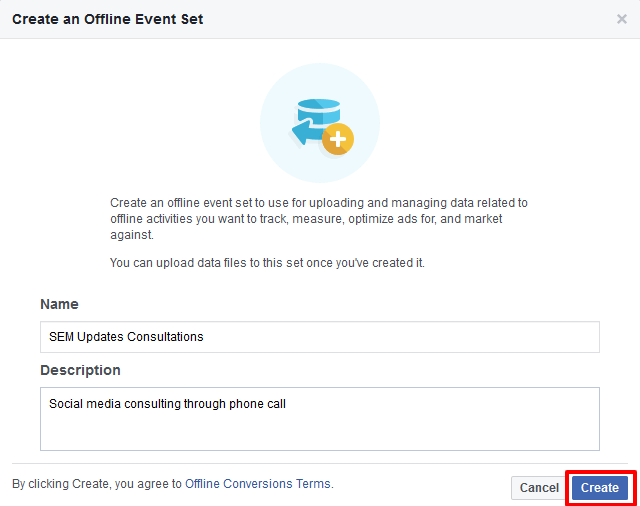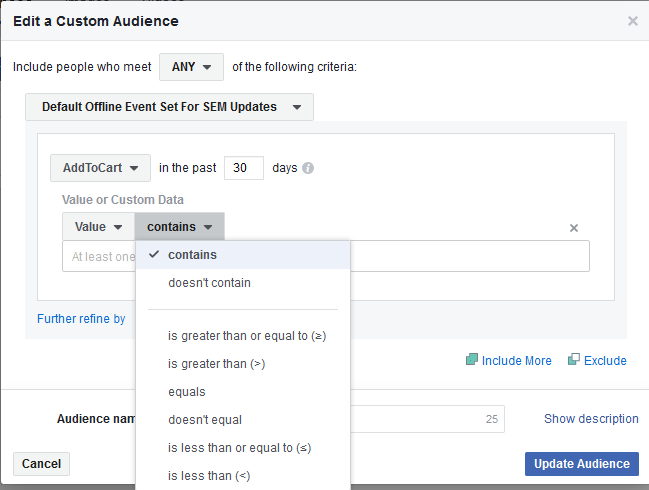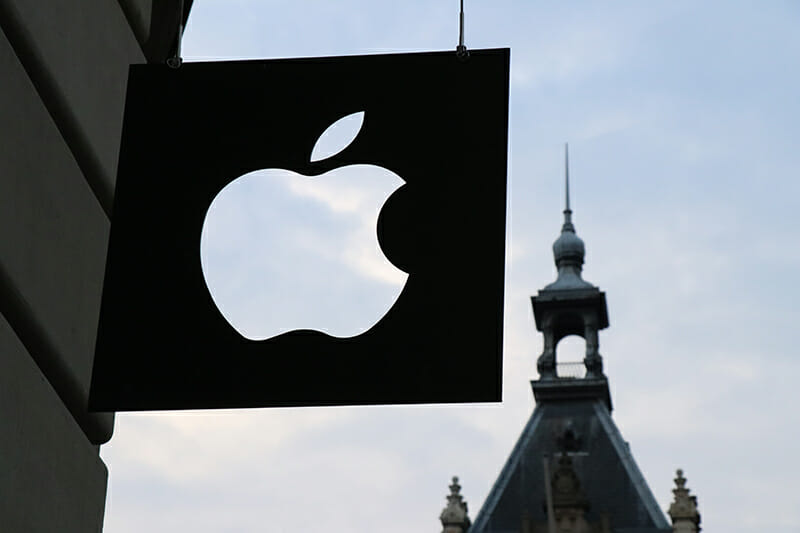AdWords for Local Businesses written by John Jantsch read more at Duct Tape Marketing
We all want to grow our business, and no matter what industry you’re in, the truth of the matter is that digital space matters. This isn’t to say you shouldn’t care about providing an excellent experience in the real world. Obviously, that should be at the core of everything you do because that’s what’s going to turn a one-time customer into a long-term champion. Even so, more and more customers are going to be looking for you in the digital space, and that means you need to be smart about what steps you take to reach them.
I don’t know about you, but the first thing I do when I’m looking for something, anything, is pull out my phone or crack open my web browser and jump straight to Google. This is, of course, fundamental to Google’s business model, and the reason that the first place any business should look when they’re thinking about digital is to AdWords. However, it’s not as simple as just flipping a switch and waiting for the phone to ring.
Instead, let’s dive into how AdWords works, how you can use it, and why it’s such a great choice for local businesses looking to reach local customers.
It’s All About the Keywords
Ever since the earliest days of online search, when Google competed with Yahoo, AltaVista, and Ask Jeeves—and Bing was just a glimmer in Bill Gates’ eye—search engine optimization (SEO) has been a keystone for marketers looking to reach their audience online. While a lot of conversation around this topic can take the tone of people looking to find loopholes or exploits in search engines via reverse engineering, at its core it’s really just recognizing the fact that any piece of digital content that you put out needs to balance being useful and engaging to your audience and being easy to find.
The key to all of this is the keyword, a flag that helps Google understand that you just might be exactly what a user is looking for.
If you haven’t already done your homework, and even if you have, the best place to start when you’re launching an AdWords campaign is with keywords. The good news is that Google actually provides you with a free tool to do all the research you need to get started, via their AdWords Keyword Planner. Regardless of whether or not you actually go forward with a paid campaign, you’ll get actionable information for building and refining a highly targeted keyword list.
Once you’ve logged in and given the Planner the info it needs about your site, you’ll be presented with a bunch of options for potential keywords you can bid on. Give special attention to the Locations setting: You can target specific ZIP codes to give your results a local focus for potential customers or clients near your business’s address.
Starting a campaign can be as simple as setting a budget, combing through your options, and dropping in some ad copy, but there’s more to the story. You’re looking at a list of words that Google thinks are relevant to your website, so it’s better to pull out the magnifying glass and make some observations.
Sifting Through the Keyword Options
Now you have this list of suggested terms, and you need to figure out what to do with it. The first thing is to get rid of anything irrelevant— stuff that maybe pops up because of how your products are named or something recurrent in your copy that actually isn’t relevant to your business. On the flip side, you want to use the “More like this” option to get more suggestions for keywords that look promising to dive even deeper into choices for your campaigns.
Then, it’s time to put them into action and collect some data on them. We need to learn more about how these keywords will actually work, so we’re basically going to hop on Google and make some observations. Because search gets customized based on your history, it might be a good idea at this point to bring up an Incognito window so you can get a clearer picture of what’s going on for the average user.
Take the most promising words and phrases from your list and run an organic search. Pay attention to everything! What AdWords posts come up? What does the front page of organic results look like? Are they mainly proprietary or third party? What words or phrases show up consistently in the results? How are the organic results titled? These kinds of things can help you identify what your current site is doing (and not doing) and make improvements. The other thing to pay attention to is what is happening with the autocompletion of the phrase, as targeting these narrower phrases can help you carve out a niche with relatively less competition.
Hopefully, all of this research helps you narrow down your list of keywords to some prime candidates for what will actually accomplish your goals. The next step is to take a step back and really think about how these pieces of the puzzle fit together. What is the intent behind a particular search term or phrase? Think about the person behind the keyboard or holding the phone. Is their query oriented towards just doing research, or is it what someone would search if they’re actually looking to make a purchase? If someone Googles “best locksmith number,” for example, they’re probably going to make a phone call to the first legit-looking place that they can find in their area. Really put yourself in a buyer’s shoes and you should be able to whittle down your terms to a useful selection for your business.
Do Recon on the Competition
Another important reality to consider for small businesses is that you have competition, and they probably have very similar goals to yours. While it’s natural to feel like you’re the smartest player at the poker table, the truth is that what you don’t know can hurt you, and you don’t want to be surprised by pocket aces. You need to look into what your competitors are doing so you can copy the good ideas and leverage their bad ones.
When you’re going through possible keywords to invest in, make special note of any time your competition pops up. Pay attention to the ad copy and titling they’re using, and compare it to both what the search term was and how it looks next to the organic results. If you put yourself in that buyer mindset, does it actually appeal to you? It’s easier to see things objectively when you’re looking at something that you haven’t made yourself, but make sure to take careful note of your observations and then ask yourself if your AdWords copy really is better, or if you’re falling for the same traps.
Tools to Research Your Competition
Beyond some simple observations, you need to know if your competitors are doing something you haven’t thought of yet. If they’re staking out keywords that are perfect for your local business, then you should make sure that you’re able to throw your hat in the ring, too. Luckily, there are tools to help you get a complete picture of what your opponents are doing.
SpyFu is the classic option for competitor keyword research. It’s the second generation of GoogSpy, and it’s an excellent way to get the information you need to see everything that’s going on with other businesses. All you need to do is enter a domain and you’ll get a report showing your competitors’ top organics, AdWords buys, and your competition’s competition for these terms, plus a whole slew of other useful information.
When you’re looking at a SpyFu report, there’s so much data available to you that it can make your head spin. Side-by-side across the page you’re looking at you get to see their organic search performance and estimated value vs. their AdWords performance and estimated monthly budget. The key here is that it gives you an idea of what their AdWords spending and performance is like, relative to their content marketing efforts, which helps you understand what their strategy may be. What you need to be thinking about is why they’ve chosen to commit to the keywords that they’re paying for, and how that might fit in with how their organics perform.
As you keep digging into the report, you can look at where they share keywords with competitors and where they occupy exclusive real estate (again, for both paid and organic). This can give you an idea of how they’re focusing their efforts in terms of a broad versus a narrow strategy in a particular area.
SpyFu will also analyze a company’s buys and those of its competitors, and let you know where there might be space for you to invest, and which other competitors have bought AdWords space for those terms as well.
Put it all together, and you’ll have a complete picture of what the AdWords terrain looks like, which will help you make some informed decisions about how you want to approach your own strategy.
Making Sure an AdWords Buy Makes Sense
Before we go forward, we need to take a moment to make sure the simple math checks out. With digital advertising, it can often be easy to lose track of what your ROI actually is while you focus on “winning” the digital scoreboard. The fact of the matter is that there are some keywords where there’s just no chance of being profitable, and you want to make sure you know what the situation is before you invest your time and money in something fruitless.
Since AdWords comes down to how much you pay per click, you need to understand what your maximum cost per click (CPC) is so you know whether or not it’s worth it to pay Google’s CPC. This ultimately comes down to your website’s conversion rate, your average profit per customer, and what kind of advertising profit margin you’re shooting for. While this seems like it’s getting a little complicated, Kissmetrics explains that it really comes down to fourth-grade math:
Max CPC = (profit per customer) x (1 – profit margin) x (website conversion rate)
Basically, we’re calculating how much you can pay per click and still hit your profit margin goal, considering your website’s conversion rate. So, if you make $100 per customer and you want to have a 40% profit margin with a 5% website conversion rate, you’re looking at a Max CPC of $100 x (1 – 0.40) x (0.05), or $4 per click.
Keep in mind that for something like conversion rate you’re going to have to hedge your bets based on how good your data is. The more data you have the more confident you can be in that number, and on the other hand, if there’s more uncertainty you’ll probably want to play it safe with a more pessimistic projection. You’re paying per click, so you want to ensure those clicks ultimately translate into growth. If you do your targeting right, you’ll be able to bump that conversion rate, which will allow you to have a higher Max CPC and put even more valuable keywords in play.
Tracking Conversions
A brief aside here to talk about how important it is to track conversions on your website. Knowing traffic numbers and how people get to you is all well and good, but at the end of the day, what keeps the lights on and the doors open is actually making the sale. There’s a way to track conversions via AdWords by getting buyers to a checkout or receipt page with embedded code, but the simpler way is to use Google Analytics and then plug that data into AdWords. This lets you keep track of not only what’s going on with AdWords, but also other sources of traffic and conversions.
Why Call Tracking is Key for Local Businesses
On the subject of conversions, one key for local businesses is that someone can still be converted without necessarily clicking through. For many places, an inbound phone call has a very high chance of becoming a sale, because it usually means a customer has finished their online research and is now trying to get something done.
So, how do we factor this into our tracking?
One option is a third-party tracking platform, which will help you keep track of more than just the inbound calls generated via AdWords, and gets this data into analytics. If you’ve done any amount of work on boosting your local search SEO (and if you haven’t, you should), you’ll know that a vital component of that work is making sure that there’s consistency across all of your listings, particularly for your name, address, and phone number (NAP consistency).
Because of this, you want to make sure the platform you choose is able to work with your actual phone number and not a special number just for tracking (although that still happens on the backend). Some good ones include CallRail, KeyMetric, and Infinity, but you can also browse through the full list of Google Analytics partners to find something that suits your business’s needs.
If a third-party system just isn’t in your budget, there’s baked-in call forwarding and tracking as part of AdWords, but you’ll have to miss out on other valuable data you can get from tracking all sources. This makes it harder to understand how big a role AdWords is playing in getting people to pick up the phone, but small business marketing budgets are a reality we all need to live with. In this case, install their snippet on your website and get what information you can.
Writing Great AdWords Copy
You don’t get a lot of space to make your pitch on AdWords, so you need to make sure that you do what you can to really reach out and grab your audience. In many ways, this is Marketing 101. What is your unique value proposition? How do you make someone an offer they can’t refuse? How do you make yourself seem like a safe bet?
The challenge with AdWords is that you only have two 30-character headlines, one 80-character description line, and a link to do all your marketing jujitsu. The good news is that you already know one thing, which is what your user is looking for. Going back to our locksmith example, you know that if someone is looking for a locksmith they probably have these kinds of questions in mind:
- How soon can they get here?
- How much will this cost me?
- Can I trust these people?
So, how do you address all that with only two brief title lines, a short sentence, and a link? The key is to pack as much information into all four of those lines as you possibly can to address your customer’s most urgent questions. Here’s some copy that tries to address all those questions:
Boise’s Trusted 24/7 Locksmith – There ASAP, Top Rated on Yelp
30 Minutes Or Less, No Hidden fees, Flat $50 Rate, Satisfaction Guaranteed
www.boiselocksmiths.com/here_to_help
Contrast that with this listing, which I pulled from Google (with the location and URL modified to not call them out directly):
Need A Locksmith In Boise – We Can Help Call Us Now 24/7
Fast And Local Response · Quality Locksmith Service · Only $19 Service Call
www.locksmithsolutions.com/Locksmith/Dispatch
This example has a couple of red flags, especially the words “ $19 service call.” What about paying the locksmith? How much will this actually cost? “Local response” also implies that this company isn’t local, which is confirmed by their generic URL. If you click through to the landing page it’s also generic, confirming our suspicions that it’s not actually a local company.
Using Small Ad Groups
Segmenting is all the rage in marketing because it lets you create more individualized campaigns that will appeal to specific groups of customers that you’re trying to reach. If you do household repairs, a pitch that’s going to appeal to first-time homeowners will look very different than one that’s tailored to someone trying to get their house in order so they can sell. We talk a lot about segmentation in mailing lists, but the idea also applies to AdWords campaigns via the concept of ad groups.
Basically, you want to break up your keywords into ad groups that make sense together. You don’t have a lot of space with AdWords, and you need to make sure that your message really grabs your audience’s attention. Again, it’s about putting yourself in the mentality of what the intent is behind a keyword search and creating a message that appeals to that intent. A good rule of thumb is to limit yourself to no more than 20 keywords per group.
Customized Landing Pages
We talked briefly about landing pages in the locksmith example, where a dubious listing led us to a super generic landing page that tipped us off to the fact that the company in question wasn’t actually local. Another takeaway from that example is that customized landing pages for each ad group can make a huge difference in your conversion rates. This principle is well known to email marketers, and it also applies to AdWords as well.
Landing pages are simply a must for online marketing. You establish trust, answer any questions a visitor might have, and drive them to a strong (and precisely placed) call to action. There is so much to be said about making (and tweaking) landing pages that drive conversion but for the purposes of this guide, it’s enough to say that you should customize them based on what each ad group’s mentality is going into the search.
Taking Advantage of AdWords Extensions
As we learned, there’s a lot you can do with the limited space you’re afforded for AdWords copy, but you also have some options for giving even more information via AdWords Extensions. If you’ve set up this feature, your ad is ranked high enough, and Google thinks it will improve your performance, extensions will add things like a call button, location information, links to specific parts of your website, and more. These features mean your ad takes up more space on the page, which is especially important on mobile. Extensions are free to add, so make sure you take the time to configure everything—when the cost is free, you already know it’ll pay off.
But the best reason of all to use Extensions is because they make your add look bigger and more prominent and that alone can lead to better performance.
Focus on Your Customer’s Mentality
At the end of the day, the important thing with building an AdWords campaign is that you are able to put yourself in the mindset of someone trying to get help with a problem—a problem that your business is ready to solve.
If you are able to focus on all the different mentalities that might lead a customer to consider giving you a call, you have everything you need to make a great AdWords campaign for your local business.
 Distribution platforms will provide you with analytics, so you’re able to see which content is getting the most traction and can tailor your approach as you learn more about your audience. The greatest downside to these types of platforms is that the content still lives on the margins of web pages. Often located below the site’s content, they look like paid content, which may turn some potential readers off.
Distribution platforms will provide you with analytics, so you’re able to see which content is getting the most traction and can tailor your approach as you learn more about your audience. The greatest downside to these types of platforms is that the content still lives on the margins of web pages. Often located below the site’s content, they look like paid content, which may turn some potential readers off.

 About the Author
About the Author













 Richa is the digital marketing consultant, helps clients generate leads, drive site traffic, and build brands through well-designed marketing strategies. She is a blogger. Read her articles on
Richa is the digital marketing consultant, helps clients generate leads, drive site traffic, and build brands through well-designed marketing strategies. She is a blogger. Read her articles on  Nupur Maskara is a Content Manager at SMS-Magic. She continuously interacts with clients to understand how they use texting for marketing, sales, and service. Nupur enjoys texting for both business and pleasure.
Nupur Maskara is a Content Manager at SMS-Magic. She continuously interacts with clients to understand how they use texting for marketing, sales, and service. Nupur enjoys texting for both business and pleasure.

 About the Author
About the Author